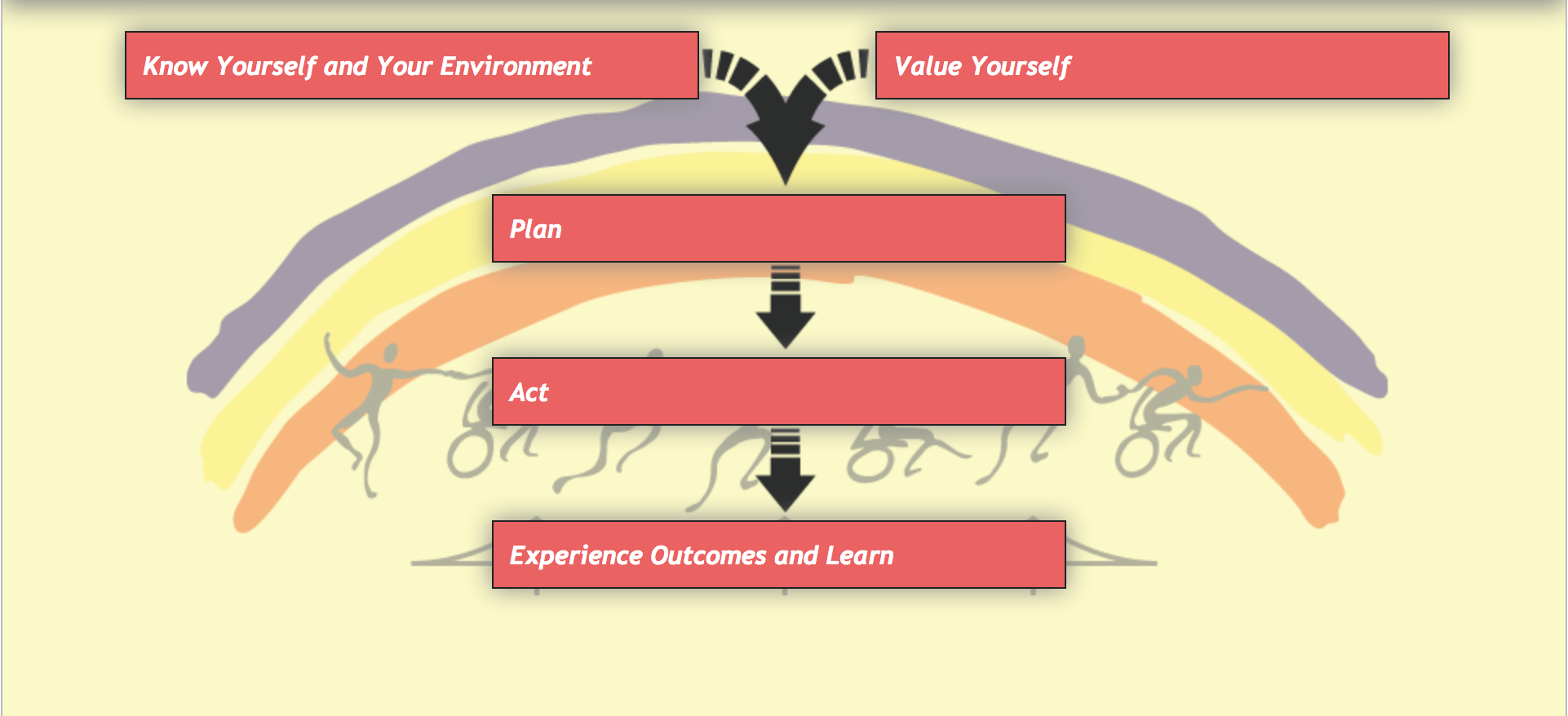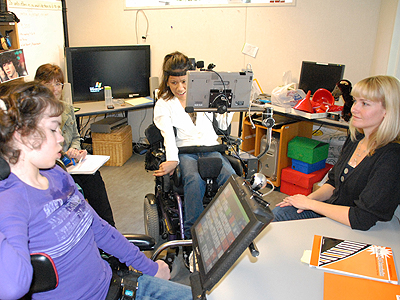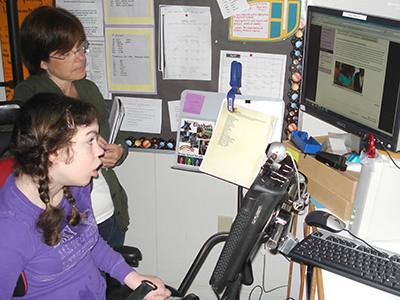Click on the expander tabs below the image to find unique AAC components (in red) and activities addressing key self-determination skills for students with complex communication needs.
Self-Determination Model
Adapted for Individuals with Complex Communication Needs
Know Yourself and Your Environment
Students learn to:
-
- Know your strengths, weaknesses, needs and preferences
-
- Know options, supports and expectations
-
- Decide what is important to you
-
- Build an awareness of your special collection ofu00a0AACu00a0tools
-
- Learn about non-verbal communication and body language
Value Yourself
Students learn to:
-
- Accept and value yourself
-
- Use weaknesses to find strengths
-
- Recognize and respect rights and responsibilities
-
- Develop and nurture positive relationships
-
- Learn how to advocate for what you want in youru00a0AACu00a0systems
-
- Learn about the responsibilities for the care and maintenance of your communication systems
Plan
Students learn to:
-
- Plan small steps to meet goals
-
- Learn about using certain communication tools for certain purposes
Act
Students learn to:
-
- Access resources and support
-
- Deal with conflict and criticism
-
- Communicate in different ways to achieve a goal, make a choice and have your opinion heard
Experience Outcomes and Learn
Students learn to:
-
- Compare outcome to expected outcome
-
- Compare performance to expected performance
-
- Learn to self-advocate when things do not go as planned
-
- Learn effective communication skills to maintain supports and social relationships
-
- Monitor progress towards goals and adjust as needed




